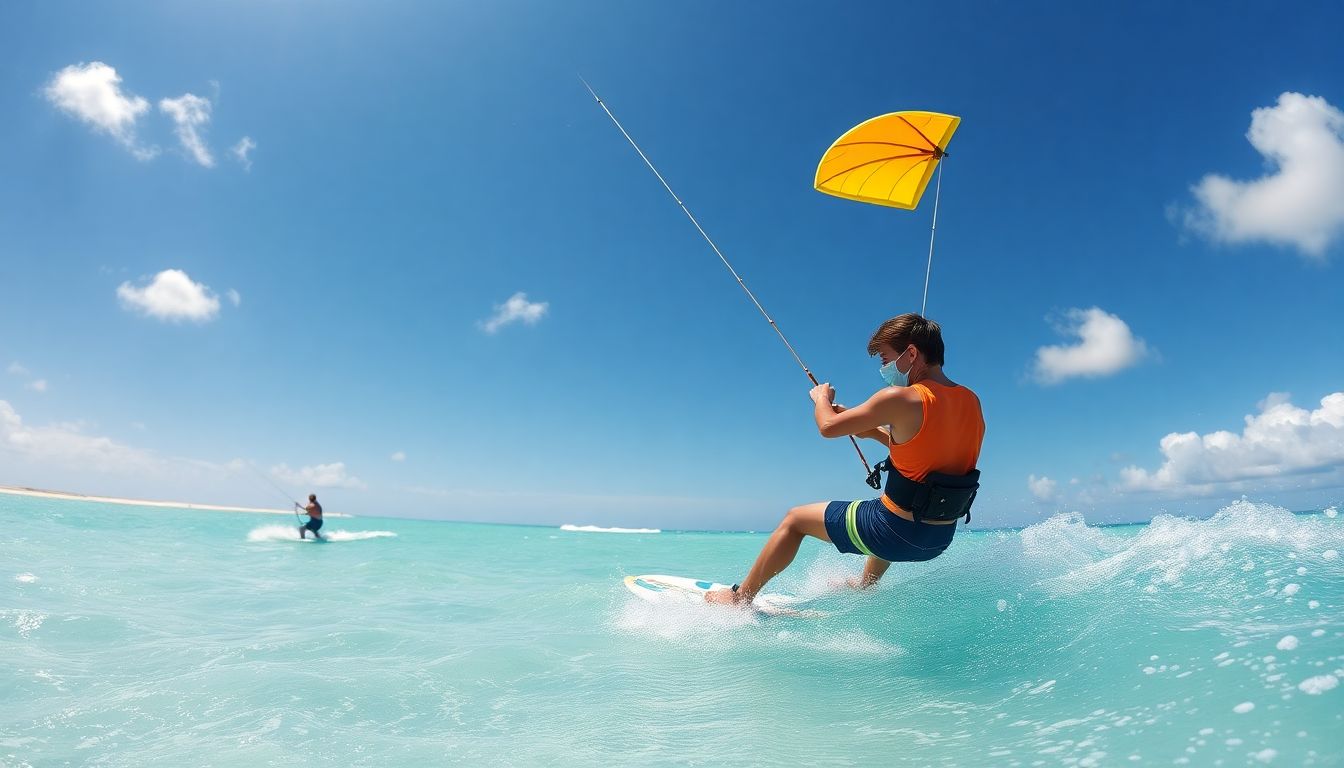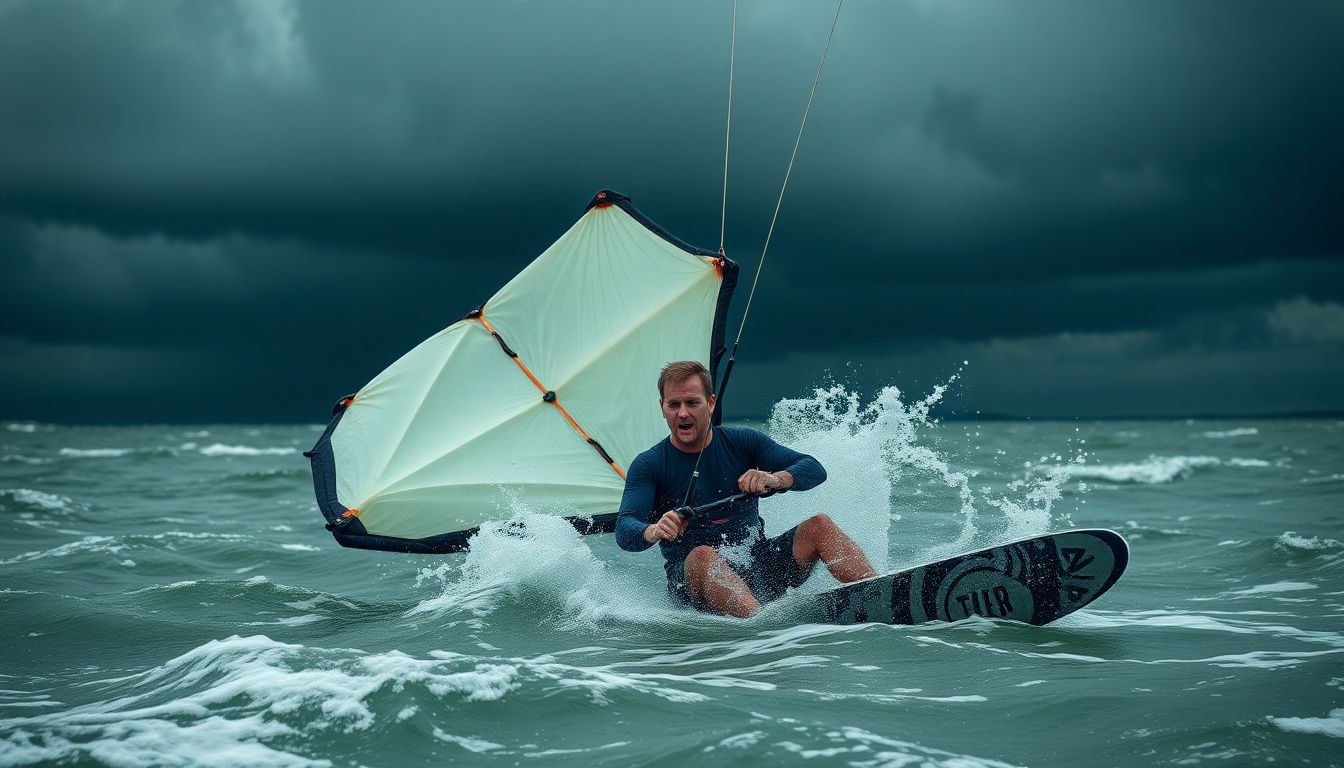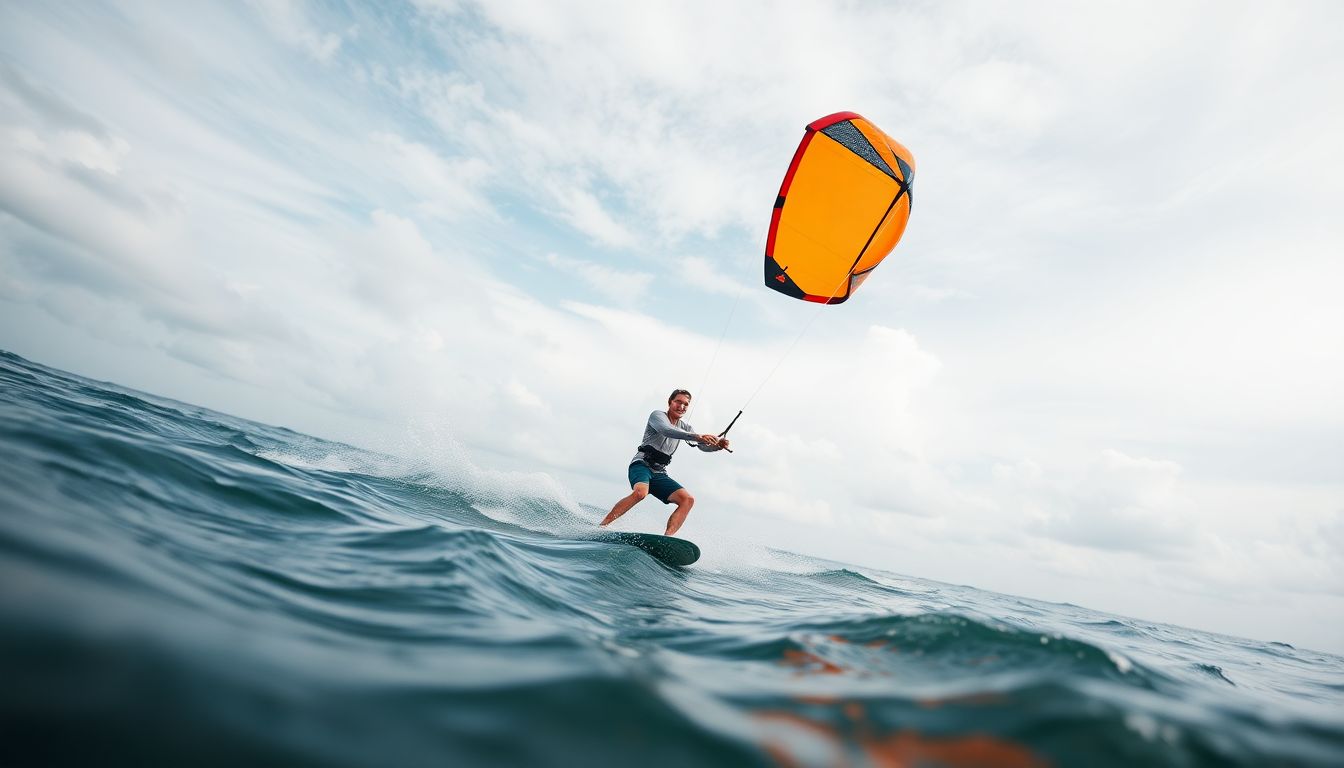Kitesurfing offers the perfect mix of excitement and freedom. Imagine catching the wind and riding is such a thrilling way. Before you jump into this exhilarating sport, there are a few things to know. This guide will help you get started, focus on safety, and improve your skills as a beginner.
[Also see our article: A Beginner’s Guide to Choosing the Right Kitesurfing Gear].
The Allure of Kitesurfing: A Thrilling Watersport
Kitesurfing combines elements of surfing, windsurfing, and parachuting. It’s not just about the ride; it’s about harnessing the wind and feeling alive. The challenge of mastering the kite while riding the waves can be addictive. Think about the rush you feel as you soar through the air!
Is Kitesurfing Right for You? Assessing Your Fitness and Commitment
Before diving in, ask yourself a few questions:
- Do you enjoy water sports?
- Are you in decent shape?
- Can you commit time to learn?
Kitesurfing requires strength and balance. A solid fitness level helps you progress faster.
Getting Started: Realistic Expectations and the Learning Curve
Every beginner starts somewhere. Expect to practice the basics before you can jump and do tricks. Be patient; it takes time to learn how to control the kite and ride smoothly. Embrace the learning curve, and enjoy the journey.
Understanding the Gear: Essential Equipment for Kitesurfers
The Kite: Types, Sizes, and Features to Consider
Selecting the right kite is crucial. Kites come in various shapes and sizes:
- Shapes: C-kites, bow kites, and delta kites.
- Sizes: Bigger kites catch more wind, while smaller ones are easier to control.
The Board: Directional vs. Twin-Tip, Choosing the Right One
Boards also differ:
- Directional Boards: Best for wave riding, similar to a surfboard.
- Twin-Tip Boards: Ideal for beginners, allowing for riding in both directions.
Safety Gear: Wetsuit, Helmet, and Life Vest
Safety gear is non-negotiable:
- Wetsuit: Protects against cold water.
- Helmet: Guards your head from impacts.
- Life Vest: Keeps you afloat if needed.
Finding the Right Location: Ideal Conditions for Kitesurfing
Wind Speed and Direction: Crucial Factors for a Successful Session
Check these before heading out. Ideally, you want steady winds between 10-30 knots.
Water Conditions: Flat Water vs. Waves, Choosing Your Spot
Flat water is great for beginners. Waves offer more challenge for advanced riders.
Legal Considerations: Permits, Regulations, and Designated Areas
Know the rules of your kitesurfing location. Some beaches have specific regulations, so check before you go.

Lessons and Instruction: Learning from Experienced Professionals
Finding a Reputable Kitesurfing School: Certification and Instructor Qualifications
Look for schools with certified instructors. They provide safe and effective lessons to help you learn quickly.
Group Lessons vs. Private Instruction: Weighing the Pros and Cons
- Group Lessons: More social and often less expensive.
- Private Instruction: Tailored to your pace and needs.
Progressive Learning: Mastering the Basics Before Moving On
Start with the basics. Focus on kite control, then practice riding before attempting tricks.
Safety First: Risks and Precautions in Kitesurfing
Understanding the Risks: Potential Hazards and Injuries
As with any sport, there are risks. Be aware of:
- Strong currents
- Changes in weather
- Equipment failures
Safety Equipment and Procedures: Ensuring Your Well-being
Always wear appropriate safety gear. Familiarize yourself with safety procedures, such as the right way to launch and land your kite.
Emergency Protocols: What to Do in Unexpected Situations
Have a plan. Know how to signal for help if things go wrong.
Kitesurfing Beyond the Basics: Tips for Continued Progress
Improving Your Technique: Drills and Exercises for Skill Development
Practice makes perfect. Work on specific techniques, like edging and jumping.
Exploring Different Styles: Freestyle, Wave Riding, and More
As you gain confidence, try different styles. Each offers unique challenges and thrills.
Joining a Kitesurfing Community: Connecting with Fellow Enthusiasts
Engage with local kitesurfers. Communities can offer support, advice, and camaraderie.
Conclusion: Embark on Your Kitesurfing Journey
Key Takeaways: Remembering the Essentials for Success
- Prepare physically and mentally.
- Prioritize safety gear.
- Seek professional instruction.
Resources: Websites, Books, and Communities for Further Learning
Look for kitesurfing websites and local groups. Access books that cover kitesurfing techniques and tips. For more see here.
Inspiring Quotes from Professional Kitesurfers
“Kitesurfing is not just about the sport; it’s about being free.” – Kitesurfing Pro
Kitesurfing can transform your outdoor experience. Now, it’s time to embrace the waves and let the wind take you on a thrilling adventure.








